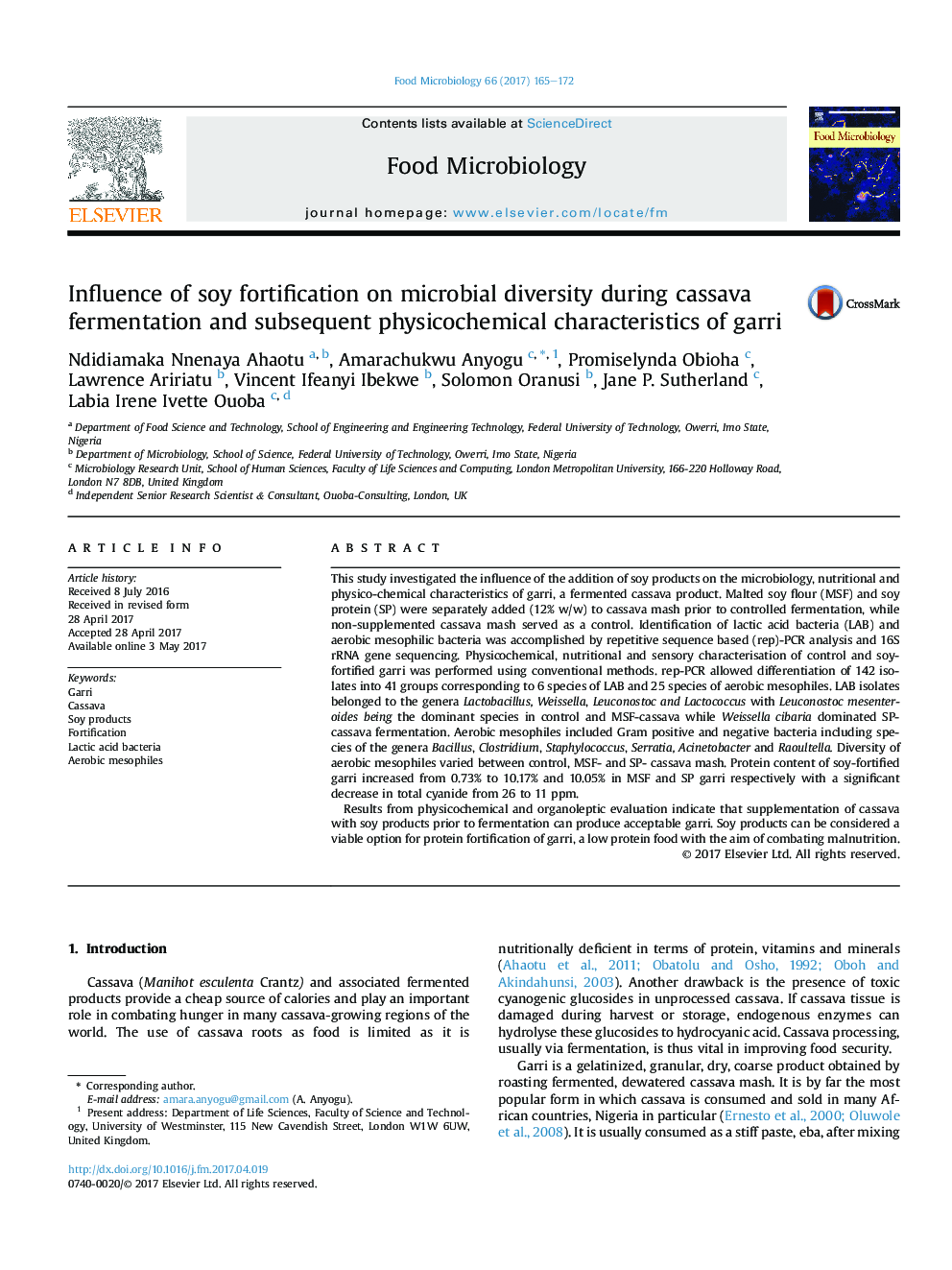| کد مقاله | کد نشریه | سال انتشار | مقاله انگلیسی | نسخه تمام متن |
|---|---|---|---|---|
| 5740042 | 1616235 | 2017 | 8 صفحه PDF | دانلود رایگان |
- Effect of protein fortification of cassava using soy extracts on fermentation and physicochemical composition of garri.
- Addition of soy extracts does not affect lactic fermentation of cassava.
- Fortified garri had significantly higher protein content and reduced cyanogenic glucosides.
- Soy fortified garri has acceptable organoleptic characteristics.
This study investigated the influence of the addition of soy products on the microbiology, nutritional and physico-chemical characteristics of garri, a fermented cassava product. Malted soy flour (MSF) and soy protein (SP) were separately added (12% w/w) to cassava mash prior to controlled fermentation, while non-supplemented cassava mash served as a control. Identification of lactic acid bacteria (LAB) and aerobic mesophilic bacteria was accomplished by repetitive sequence based (rep)-PCR analysis and 16S rRNA gene sequencing. Physicochemical, nutritional and sensory characterisation of control and soy-fortified garri was performed using conventional methods. rep-PCR allowed differentiation of 142 isolates into 41 groups corresponding to 6 species of LAB and 25 species of aerobic mesophiles. LAB isolates belonged to the genera Lactobacillus, Weissella, Leuconostoc and Lactococcus with Leuconostoc mesenteroides being the dominant species in control and MSF-cassava while Weissella cibaria dominated SP-cassava fermentation. Aerobic mesophiles included Gram positive and negative bacteria including species of the genera Bacillus, Clostridium, Staphylococcus, Serratia, Acinetobacter and Raoultella. Diversity of aerobic mesophiles varied between control, MSF- and SP- cassava mash. Protein content of soy-fortified garri increased from 0.73% to 10.17% and 10.05% in MSF and SP garri respectively with a significant decrease in total cyanide from 26 to 11Â ppm.Results from physicochemical and organoleptic evaluation indicate that supplementation of cassava with soy products prior to fermentation can produce acceptable garri. Soy products can be considered a viable option for protein fortification of garri, a low protein food with the aim of combating malnutrition.
Journal: Food Microbiology - Volume 66, September 2017, Pages 165-172
